If the RS Vector was a song, it would be “Peaceful, Easy Feeling” by the Eagles. If it was food, it would be home-cooked mashed potatoes and gravy. And if it were a dog? It would be an old Labrador, curled up at the foot of a Barcalounger, right after he delivered your slippers.
Calling any snowmobile a “comfort sled” may sound like a criticism, but that’s not our intention with the RS Vector. It’s familiar, dependable, trustworthy and predictable, and it fits just right for many trail riders. It’s not as aggressive as the highly strung (and highly sprung) performance special sleds, but it’s not intended to be.
Those characteristics made the RS Vector an interesting sled to bring with us on a variety of snowmobiling adventures last winter. We’d unload the trailer featuring the latest and greatest sleds from the various brands, and the aggressive riders wearing MX helmets and goggles would immediately start foaming at the mouth over the MX Z, Rush and F snowmobiles.
More laid-back riders, folks with older sleds who hadn’t updated for awhile and even some relative newcomers could be found gravitating toward the RS Vector. With ergos that place the driver lower and farther back in the chassis than the REVs, Pro-R
If the RS Vector was a song, it would be “Peaceful, Easy Feeling” by the Eagles. If it was food, it would be home-cooked mashed potatoes and gravy. And if it were a dog? It would be an old Labrador, curled up at the foot of a Barcalounger, right after he delivered your slippers.
Calling any snowmobile a “comfort sled” may sound like a criticism, but that’s not our intention with the RS Vector. It’s familiar, dependable, trustworthy and predictable, and it fits just right for many trail riders. It’s not as aggressive as the highly strung (and highly sprung) performance special sleds, but it’s not intended to be.
Those characteristics made the RS Vector an interesting sled to bring with us on a variety of snowmobiling adventures last winter. We’d unload the trailer featuring the latest and greatest sleds from the various brands, and the aggressive riders wearing MX helmets and goggles would immediately start foaming at the mouth over the MX Z, Rush and F snowmobiles.
More laid-back riders, folks with older sleds who hadn’t updated for awhile and even some relative newcomers could be found gravitating toward the RS Vector. With ergos that place the driver lower and farther back in the chassis than the REVs, Pro-Ride, ProCross or FX chassis, it was less intimidating and more comforting to many riders.
That was their reaction upon first fitting themselves behind the bars. The feeling of comfort doubled when they headed down the trail. The RS Vector has the lightest steering in the sport (thanks to power steering) and a smooth acceleration curve and low-sounding exhaust note from the 1049cc four-stroke triple. It makes plenty of horsepower — somewhere in the mid 130s — and can easily climb to 100 mph, but it does so in a controlled manner. There’s no ski-lifting pop on the bottom end, nor a blast of power when coming out of a corner that overpowers the chassis and forces the driver to make a sudden, corrective move.
Smooth to moderately rough trails with sweeping turns are where the Vector really showed its strength. Once trails got rougher, so did the ride. The weight of the Vector and the limitations of the MonoShock II CK rear suspension became more apparent deeper into each weekend, when the trail surface turned to chop. It wasn’t overly punishing, but it did cause riders to slow down while drivers on performance sleds stayed on the gas. Also, when pushed hard through particularly tight and twisty trails, the front end didn’t hold its line as well as many competitive models, causing more judicious use of the brake to keep it on the correct side of the trail.
Those characteristics limited the Vector’s appeal for the go-like-your-hair-is-on-fire crowd. But for the large group of riders we spoke of earlier? Many trail veterans avoid Sunday afternoon trails, and many others who don’t feel comfortable on taller, more forward-canted sleds are willing to give up some suspension performance for a machine that feels “right.”
It happened many times. From a returning-to-sport friend to our co-worker Dustin (a rider who owns sleds from the ’90s) to my 15-year-old son who’s in his second year riding full-sized sleds, the RS Vector was the sled of choice. Each rider just felt right tucked behind the mid-height windshield, utilizing the flat-handlebars and pulling the light throttle.
From an ease-of-use standpoint, it’s also worth mentioning that our RS Vector was problem-free all winter. The engine started easily and ran well in all sorts of weather — in typical Yamaha fashion. The glossy black finish looked good-as-new at year’s end.
No snowmobile is perfect, of course. In the right snow conditions, the rear end of the Vector captured a ton of snow against the bottom of the tunnel and quickly turned it to big blocks of ice that formed up against the rear-exiting exhaust. We also still want an easier-to-read digital gauge — the big sweeping, analog tachometer is OK out but the digital readout, which comes directly off the company’s sporty motorcycles, is too difficult to read in changing light conditions or when bouncing down a trail.
ide, ProCross or FX chassis, it was less intimidating and more comforting to many riders.
That was their reaction upon first fitting themselves behind the bars. The feeling of comfort doubled when they headed down the trail. The RS Vector has the lightest steering in the sport (thanks to power steering) and a smooth acceleration curve and low-sounding exhaust note from the 1049cc four-stroke triple. It makes plenty of horsepower — somewhere in the mid 130s — and can easily climb to 100 mph, but it does so in a controlled manner. There’s no ski-lifting pop on the bottom end, nor a blast of power when coming out of a corner that overpowers the chassis and forces the driver to make a sudden, corrective move.
Smooth to moderately rough trails with sweeping turns are where the Vector really showed its strength. Once trails got rougher, so did the ride. The weight of the Vector and the limitations of the MonoShock II CK rear suspension became more apparent deeper into each weekend, when the trail surface turned to chop. It wasn’t overly punishing, but it did cause riders to slow down while drivers on performance sleds stayed on the gas. Also, when pushed hard through particularly tight and twisty trails, the front end didn’t hold its line as well as many competitive models, causing more judicious use of the brake to keep it on the correct side of the trail.
Those characteristics limited the Vector’s appeal for the go-like-your-hair-is-on-fire crowd. But for the large group of riders we spoke of earlier? Many trail veterans avoid Sunday afternoon trails, and many others who don’t feel comfortable on taller, more forward-canted sleds are willing to give up some suspension performance for a machine that feels “right.”
It happened many times. From a returning-to-sport friend to our co-worker Dustin (a rider who owns sleds from the ’90s) to my 15-year-old son who’s in his second year riding full-sized sleds, the RS Vector was the sled of choice. Each rider just felt right tucked behind the mid-height windshield, utilizing the flat-handlebars and pulling the light throttle.
From an ease-of-use standpoint, it’s also worth mentioning that our RS Vector was problem-free all winter. The engine started easily and ran well in all sorts of weather — in typical Yamaha fashion. The glossy black finish looked good-as-new at year’s end.
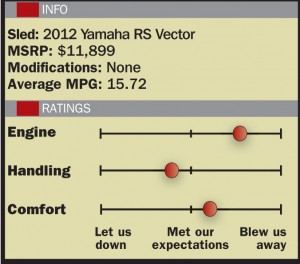
No snowmobile is perfect, of course. In the right snow conditions, the rear end of the Vector captured a ton of snow against the bottom of the tunnel and quickly turned it to big blocks of ice that formed up against the rear-exiting exhaust. We also still want an easier-to-read digital gauge — the big sweeping, analog tachometer is OK out but the digital readout, which comes directly off the company’s sporty motorcycles, is too difficult to read in changing light conditions or when bouncing down a trail.

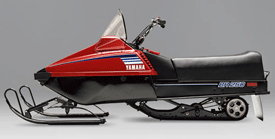
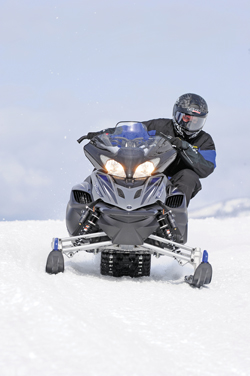
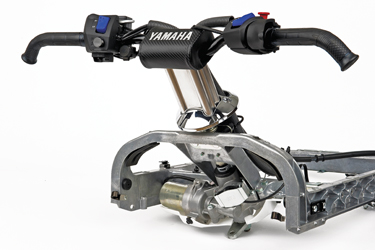
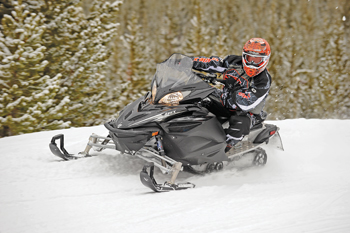
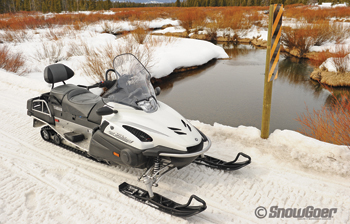
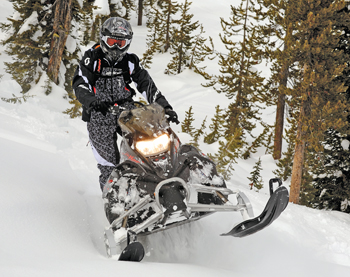
A 15 year old kid driving a 130 hp 700 lb sled on busy trails just scares me a bit. I see so many parents out with their young kids on 500-700 cc machines, some can barely touch the running boards with their feet, driving their own sleds. I guess thats safe?? But if I stop at a bar with my buddies and have a beer with our lunch we are classified as a bunch of drunk trail bashers. Go figure.
I bought my 2012 RS Vector in December of 2011. We did not have much snow last year, so I’m just now getting to enjoy it. We did 70 miles yesterday with experienced riders. My sled served me quite well with the veterans through the trails and across the lakes. It’s an awesome machine.
you need to find some real experinced riders 70 miles we put that on going to get morning chow ,,you need to get out and ride we do 275 to 350 miles a day and a bad day is 200 miles but there,s not a bad day when your rideing ! me and my son broke are record in dec 27 2012 we got 463 miles on had a great time we put on 1,723 miles on in 5 day,s and got 5,000 miles on for the year , what a year !! if you want to get some miles on your vector leave me a way to contact you if you can come to or live in michigan ,, we would be happy to show you the trail,s some miles and a good time any one that,s likes to ride can ride with us , we think about snow all year long that,s all I think about from the time I get up tel I go to bed even when i,m sleeping ,put money away all summer and fall so we can play all winter we live for snowmobileing !!